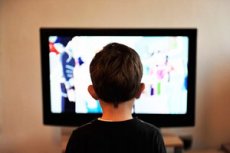New publications
Hypodynamia is the enemy of the modern child
Last reviewed: 02.07.2025

All iLive content is medically reviewed or fact checked to ensure as much factual accuracy as possible.
We have strict sourcing guidelines and only link to reputable media sites, academic research institutions and, whenever possible, medically peer reviewed studies. Note that the numbers in parentheses ([1], [2], etc.) are clickable links to these studies.
If you feel that any of our content is inaccurate, out-of-date, or otherwise questionable, please select it and press Ctrl + Enter.

The abundance of all kinds of gadgets in the lives of modern children leads to a decrease in their motor activity. Experts from the United States have found that the average child today makes fewer active movements than an elderly person at 60 years old.
A representative of Johns Hopkins University analyzed data from more than twelve thousand children, which were collected during 2003-2006. The purpose of the analysis was to find out to what extent the level of children's activity corresponded to the requirements of the World Health Organization.
A lack of physical activity can eventually lead to the development of serious pathologies, which include metabolic diseases, heart and vascular diseases, and even oncology. Scientists say that people get the beginnings of health problems in childhood.
According to WHO recommendations, the daily routine of every child from 5 to 17 years old should include moderate or vigorous physical activity lasting at least an hour daily.
However, when examining the daily routine of the children surveyed, it was discovered that most of them did not meet even the minimum physical requirements for their age.
"The activity level of children under 17 is extremely low: by the end of school, most of them suffer from hypodynamia. Their activity level can only be compared with that of old people of retirement age," says the doctor, a specialist in biological statistics.
As the scientist adds, for the average child, the main time for possible physical activity is the period from 2:00 PM to 6:00 PM (after school ends). Therefore, the question of organizing free time for children should be asked to parents. Most often, moms and dads do not think about the consequences of physical inactivity and let things slide: if a child sits in front of a computer or TV, and he likes it, then there is nothing wrong with that.
Of course, such a situation is comfortable, first of all, for parents: a son or daughter is at home, there is no need to worry about them. However, according to experts, there are more than enough reasons to worry. A hypodynamic child eventually becomes lethargic, irritable, his appetite worsens or, on the contrary, increases, sleep is disturbed, academic performance and work capacity suffer.
Children are at increased risk of developing obesity and atherosclerosis. Blood stagnation in the vascular network leads to deterioration of blood circulation in the organs and in the brain. Thinking processes, memory and concentration deteriorate. The muscular system weakens, which leads to disorders of the spine and internal organs.
It is worth considering that the appearance of the listed signs indicates that the problem already exists. Therefore, preventive measures should be started long before the first symptoms are detected. And the parents of the child, as well as his immediate environment, are primarily responsible for this.
